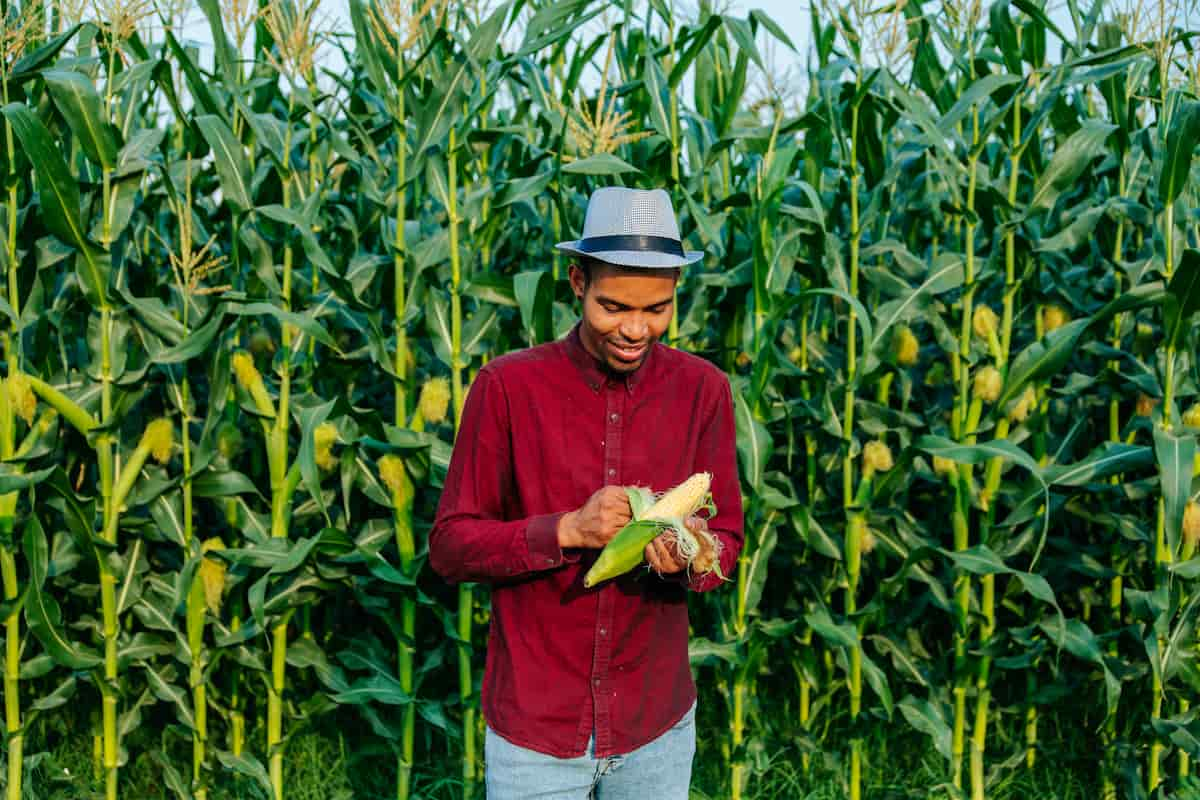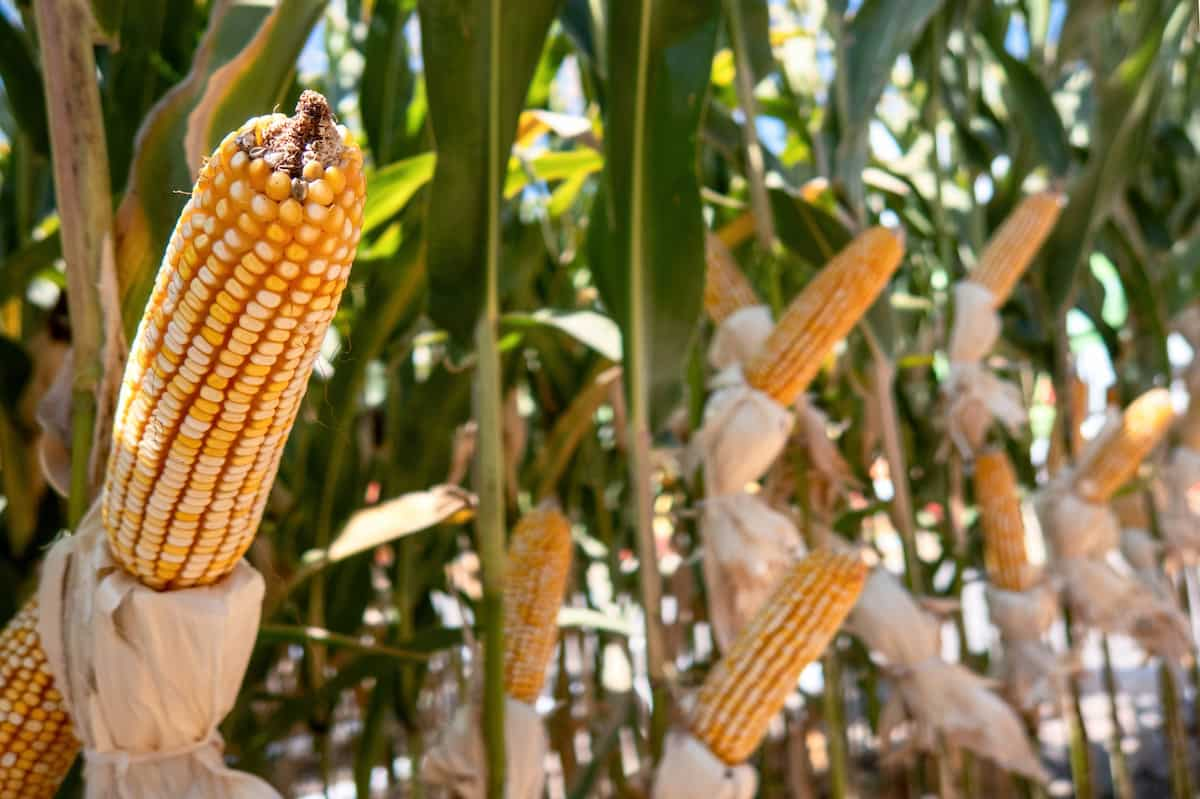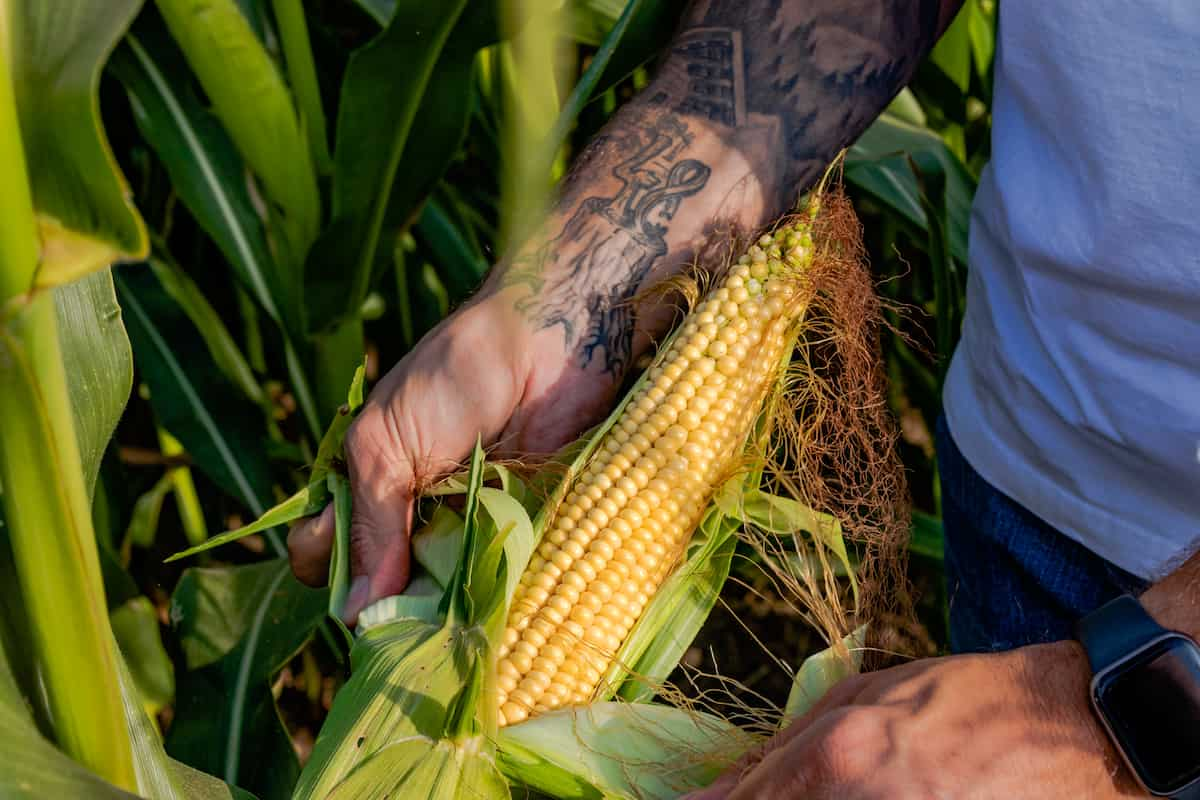One of America’s most important items is corn, and Iowa is the country’s leading producer. Starting a corn farm in Iowa can be profitable if you’re willing to put in the hard work and dedication required to establish and maintain a successful farming operation. Below we learn how to start corn farming in Iowa, how to grow and care for corn in Iowa and how to plant corn step by step.

How to Start Corn Farming in Iowa
Research and Planning
Before you start corn farming, gathering as much information as possible about corn cultivation in Iowa is crucial. Learn about the local climate, soil types, crop varieties, and potential pests and diseases. Consult with experienced local farmers, extension agents, or agricultural researchers for advice and insights. Create a business plan including objectives, budget, and marketing and distribution plans.
Acquire Land and Equipment
Once you have completed your research and planning, the next step is to acquire suitable land for your corn farm. Look for fertile soil with good drainage, easy access to water, and favorable growing conditions. When choosing a location, consider the proximity to transportation and markets to reduce costs and increase profitability. Additionally, purchase or lease necessary farming equipment, such as tractors, ploughs, planters, and combine harvesters.
Soil Preparation
Soil Testing
Before planting, it is essential to analyse the soil’s nutrient content and pH levels. Gather soil samples from various spots on your land, then have them analysed by a reliable lab. The results will help you determine which nutrients are lacking and the appropriate type and amount of fertilizer needed.
Fertilization
Apply the recommended fertilizers to your field based on the soil test results. In Iowa, corn typically requires high nitrogen, phosphorus, and potassium levels. Use the appropriate application method, such as broadcast or banding, to ensure even distribution.
Tillage
Tillage is breaking up and turning over the soil to create a suitable seedbed. There are several tillage methods, including conventional, reduced, and no-till. Choose the strategy that fits your farm’s requirements and ambitions. Remember that excessive tillage can lead to soil erosion and loss of soil structure.
Selecting Corn Varieties
Choosing a suitable corn variety is crucial to the success of your farm. Consider yield potential, disease and pest resistance, and maturity period. Consult with local experts, extension agents, or seed suppliers to select the most suitable varieties for your farm. Also, consider rotating different varieties over the years to maintain soil health and reduce the risk of pest infestations.
Planting
Timing
Planting corn in Iowa is best done between the end of April and the beginning of May. However, this might change depending on the humidity and temperature of the soil in a given area. The soil should be kept at about 50 degrees Fahrenheit (10 degrees Celsius) for optimal germination and development.
Seed Spacing and Depth
Proper seed spacing and planting depth are essential for optimal corn growth. Plant seeds approximately 1.5 to 2 inches deep, with a 6 to 7 inches spacing between seeds within rows and 30 inches between rows. Adjust the planter settings accordingly to achieve the desired seed placement.
Irrigation
Although corn is relatively drought-tolerant, it still requires adequate moisture throughout the growing season. Monitor soil moisture levels and provide supplemental irrigation, particularly during the critical stages of germination, early growth, and pollination.
In case you missed it: Maize/Corn Production Guide: A Step-By-Step Cultivation Practices

Pest and Disease Management
Scouting
Regularly scout your fields for signs of pest infestations or disease outbreaks. Early detection and intervention are crucial for minimising potential damage to your crop. Keep a close eye on common corn pests in Iowa, such as corn rootworms, cutworms, and European corn borers, as well as diseases like gray leaf spots, northern corn leaf blight, and common rust.
Integrated Pest Management (IPM)
If you want to keep diseases and pests at bay, it’s best to use an integrated pest management strategy that takes into account both cultural and biological factors. Crop rotation, resistant cultivars, timely pesticide applications, biological control agents like beneficial insects, and so on all fall under this category.
Proper Pesticide Use
When using pesticides, always follow label instructions and safety guidelines. Choose products specifically designed for the pests or diseases you’re targeting and apply them at the correct rate and time. Be mindful of potential environmental impacts and use pesticides responsibly.
Harvesting
Timing
Corn harvest usually occurs from late September to early November in Iowa, depending on the variety and weather conditions. Monitor the crop’s moisture content and maturity to determine the optimal harvest time. Aim for a grain moisture content of around 15-20% to reduce drying costs and prevent spoilage.
Equipment
Use a combine harvester to harvest the corn efficiently. Ensure the combine is adjusted correctly and maintained to minimize grain loss and damage. Inspect and clean the equipment regularly to prevent the spread of pests or diseases.
Storage
After harvesting, corn must be stored appropriately to maintain quality and prevent spoilage. Clean and sanitize grain bins before storing the crop. Use aeration to maintain a consistent temperature and moisture level within the storage facility. Regularly monitor stored grain for signs of pests, mold, or other issues and address them promptly.
Marketing and Distribution
Develop a marketing plan that includes identifying potential buyers, such as local feed mills, ethanol plants, and food processors. Establish relationships with these buyers to secure contracts and negotiate your corn’s best prices. Consider joining a local cooperative or marketing group to pool resources and increase your bargaining power. Additionally, explore alternative markets, such as organic or specialty corn, to differentiate your product and potentially increase profits.
In case you missed it: How to Grow Sweet Corn in Your Home Garden: Pots, Backyard, and Terrace

Conclusion
Starting a corn farm in Iowa requires thorough planning, research, and dedication. By following these steps and continually seeking to improve your farming practices, you can establish a successful corn operation that contributes to the thriving agricultural industry in the state. Always be open to learning from experienced farmers and experts to stay up-to-date with the latest corn production and management developments.
- Feed Your Flock for Less: Top 10 Tips to Save on Chicken Feed
- Ultimate Guide to Ossabaw Island Hog: Breeding, Raising, Diet, and Care
- Hatching Answers: The Top 10 Reasons Your Chickens Aren’t Laying Eggs
- Eggs and Economics: Breaking Down the Cost of Raising Backyard Chickens
- Defend Your Greens: Proven Methods to Keep Iguanas Out of Your Garden
- Ultimate Guide to Cinnamon Queen Chicken: A Comprehensive Guide for Beginners
- Ultimate Guide to California Tan Chicken: Breeding, Raising, Diet, Egg-Production and Care
- Ultimate Guide to Marsh Daisy Chicken: Breeding, Raising, Diet, and Care
- 10 Types of Chicken Farming Businesses You Can Start for Profits